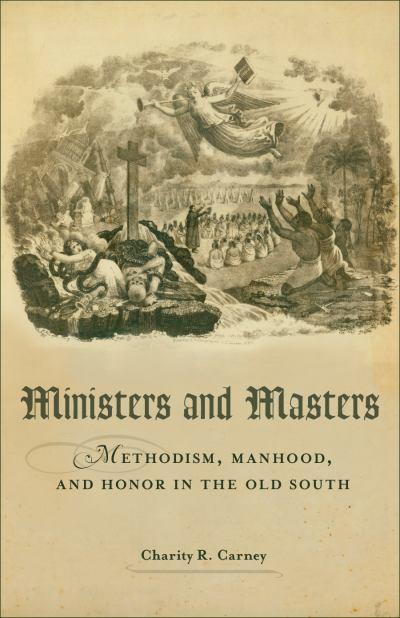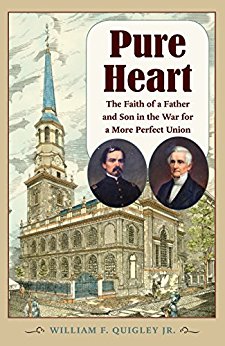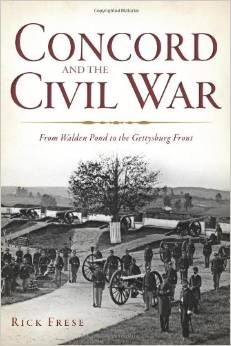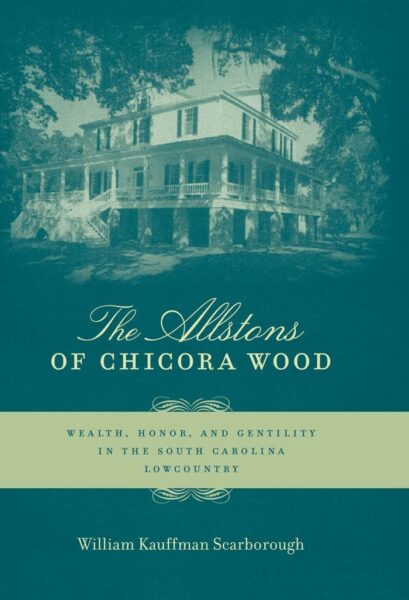Over the last several decades, scholars of the antebellum South have deepened our understanding of the influence of honor and masculinity on the region’s history. Their studies have not only furthered appreciation of gender as a category of analysis, but have also allowed for a more intricate understanding of the divergence of North and the South during the nineteenth century. That being said, the degree to which notions of reputation and manhood complicated the lives of men outside the master class remains less completely understood. This circumstance remains especially valid when it comes to the complex lives of southern ministers. In Ministers and Masters, Charity Carney furnishes a concise study of antebellum southern Methodist ministers and their often remarkable intersections with the culture of southern honor.
Whether rural itinerants or urban ministers, southern Methodist preachers confronted the dilemma of the necessity to both rebuke and embrace regional concepts of honor and mastery. For obvious reasons, southern Methodist ministers were foreclosed from activities ranging from drinking and dueling to gambling and politicking. However, far from rejecting notions of manhood, men like Bishop James Osgood Andrew, Carney argues, constructed their own definition of masculinity based on “piety” and “perseverance” and, via these, engaged in a masculine form of “aggressive” evangelism (6-7). At bottom, this ministerial strategy aimed to surmount the paradoxes of antebellum southern culture and, especially, its need to honor equality and hierarchy as well as to judiciously balance religious and temporal concerns.
In subsequent chapters, Carney deftly probes the possibilities and limitations of this antebellum southern Methodist errand to balance ecumenical and regional demands between 1830 and 1860. Although clergymen were precluded from most typical forms of male conviviality, Methodist ministers, Carney argues, created a “clerical brotherhood” which, through religious newspapers denominational conferences and strict discipline, came to comprise a distinctive variety of southern manhood (14). This southern Methodist manhood sought a delicate balance of the sacred and secular in the Old South. This impulse, Carney notes, increasingly led southern ministers to reject democratic denominational reform in favor of a decidedly patriarchal church structure. More obviously, this urge eventually led southern ministers to embrace the social norm of marriage as a means to both further their own honor and to better preserve that of their congregants. At the same time, the nature of itinerancy and the ministerial privileging of the church’s success over both personal gain and familial concerns perpetually juxtaposed ecclesiastical honor and patriarchal power.
In two concluding chapters, Carney expands on the boundaries of this contradiction in the realms of childrearing and slaveholding. In terms of the former, the Methodist doctrine of spiritual equality, which extended to the belief that children could possess wisdom and spirituality exceeding their elders, challenged prevailing southern notions of the patriarchal household. At the same time, Methodist literature, Carney notes, routinely portrayed parents as either upholding standards of godliness or sinfulness. This duality afforded ministers the ability both to support parental authority and to, when needed, rebuke patriarchs who did not meet doctrinal standards. Of course, the implications of this Methodist doctrine of spiritual equality inevitably extended to the matter of endorsing or rebuking slaveholding. Much as they had in regards to children, Methodist periodicals demoted the master-slave relationship in favor of a narrative which juxtaposed the spiritual slave and heathenish master. Further undermining southern patriarchy, Methodist ministers elaborated a theology which sanctioned ownership of slave’s bodies, but which expressly denied the master’s claims on slaves’ souls. This, Carney argues, permitted southern ministers to paradoxically exalt both “proslavery ideology” and “egalitarian theology” (135).
In the end, this delicate tension increasingly placed southern Methodist ministers in a perilous position as they struggled to balance doctrine against regional cultural imperatives. During the 1840s, their embrace of southern culture, Carney argues, began to gradually overwhelm their Methodist identity. In 1844, southern ministers determined to break away from the national church in an event which, Carney suggests, was as much about competing notions of “ministerial manhood” as it was about the legal status of slavery (140).
Though Ministers and Masters concludes with the year 1860, one is left to wonder to what extent the willingness of southern Methodist preachers to secede from the national church in 1844 might have subsequently emboldened the political secessionists of 1861. Furthermore, might this have been a case of Methodist masculinity foreshadowing the culmination of antebellum southern manhood rather than the other way around? This is among a host of thought provoking questions raised by Carney’s well-crafted study. On the whole, Ministers and Masters is an insightful treatment of the creation of southern Methodist manhood and is a worthy addition to the cultural history of the antebellum South.
John J. Langdale III is an Assistant Professor of History at Andrew College.





